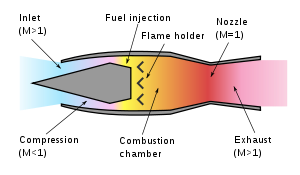Aerospace Engineering E-Books
How to Download E-books
copy and paste the following links in the browser to download ebooks
Click the below link to download winrar software for extracting the zipped files
http://files.myopera.com/RAM%20KANNAN/files/wrar30.exe
1.Aircraft Design Projects for Engineering Students by L.R.Jenkinson (2003) [1.97MB]
http://rapidshare.de/files/21092183/JENKINSON__L._R.__2003_._Aircraft_Design_Projects_for_Engineering_Students.rar
2.Aeronautical Engineer's Data Book by C.Matthews (2001) [2.00MB]
http://rapidshare.de/files/21097449/MATTHEWS__C.__2001_._Aeronautical_Engineer_s_Data_Book.rar
3.Vibration Fundamentals by R.K.Mobley (1999) [8.84MB]
http://rapidshare.de/files/21104156/MOBLEY__R._K.__1999_._Vibration_Fundamentals.rar
4.The Theory and Design of Air Cushion Craft by L.Yun (2000) [43.99MB]
http://rapidshare.de/files/21144432/YUN__L.__2000_._Theory_and_Design_of_Air_Cushion_Craft.rar
5.Fluid Mechanics - Thermodynamics of Turbomachinery by S.L.Dixon (1998) [2.67MB]
http://rapidshare.de/files/21075455/DIXON__S._L.__1998_._Fluid_Mechanics__Thermodynamics_of_Turbomachinery__4th_ed._.rar
6.Introduction to Space Sciences & Spacecraft Applications by B.A.Campbell (1996) [3.68MB]
http://rapidshare.de/files/21073501/CAMPBELL__B._A.__1996_._Introduction_to_Space_Sciences_and_Spacecraft_Applications.rar
7.Gas Turbine Engeering by M.P.Boyce (2001) [9.28MB]
http://rapidshare.de/files/21061023/BOYCE__M._P.__2001_._Gas_Turbine_Engineering_Handbook__2nd_ed._.rar
8.Computational Fluid Dynamics by J.Blazek (2001) [7.31MB]
http://rapidshare.de/files/21052513/BLAZEK__J.__2001_._Computational_Fluid_Dynamics_-_Principles_and_Applications.rar
9.Engineering Mathematics by J.Bird (2003) [3.79MB]
http://rapidshare.de/files/21051025/BIRD__J.__2003_._Engineering_Mathematics__4th_ed._.rar
10.Aerodynamics, Aeronautics and Flight Mechanics by McCormick [3.43MB]
http://rapidshare.de/files/22492628/McCormick_-_Aerodynamics__Aeronautics_and_Flight_Mechanics__Partial_Scan_p1-179_.pdf
11.Missile Aerodynamics by J.N.Nielson (1960) [19.87MB]
http://rapidshare.de/files/22493320/Nielsen_J.N._-_Missile_Aerodynamics__McGraw_Hill_1960_.pdf
12.Airplane Aerodynamics by C.E.Lan Jan Roskam (1997) [30.90MB]
http://rapidshare.de/files/22495073/Roskam__Jan___Lan_C.E._-_Airplane_Aerodynamics_and_Performance__DARcorporation_1997_.pdf
13.Basic Helicopter Aerodynamics by J.Seddon (1990) [8.60MB]
http://rapidshare.de/files/22495355/Seddon_J._-_Basic_Helicopter_Aerodynamics__BSP_Prof._Books_1990_.pdf
14.Introduction to Aerodynamics of Flight by T.A.Talay (1975) [6.89MB]
http://rapidshare.de/files/22495598/Talay__T.A._-_Introduction_To_Aerodynamics_Of_Flight__NASA_SP-367_1975_.pdf
15.Aerodynamics of Cars [0.17MB]
http://rapidshare.de/files/22495800/Unknown_-_Aerodynamics_of_cars__Notes_.pdf
16.Basic Aerodynamics by US Army (1994) [1.55MB]
http://rapidshare.de/files/22495850/US_Army_-_Basic_Aerodynamics_AL0966__US_Army_1994_.pdf
17.Introduction to Helicopter Aerodynamics by US Navy (2000) [2.06MB]
http://rapidshare.de/files/22495932/US_Navy_-_Introduction_to_Helicopter_Aerodynamics_Workbook_CNATRA_P-401__US_Navy_2000_.pdf
18.Unsteady Aerodynamics, Aeroacoustics and Aeroelasticity of Turbomachines by Kenneth C. Hall
http://mihd.net/zuj85s
19.Aircraft Structures for Engineering Students by T. H. G. Megson
http://mihd.net/4qt5ep
20.Thin-Walled Composite Beams Theory and Application by Liviu Librescu
http://rapidshare.com/files/12487708/Thin-Walled_Composite_Beams.rar
21.Stirling and Hot Air Engines by Crowood Press
http://rapidshare.com/files/36456554/Stirling_and_hot_air_engines-LQRS.tar.gz.html
22.Air Engines The History, Science, and Reality of the Perfect Engine by Theodor Finkelstein
http://mihd.net/v6g8ch
23.Boeing 707/720 by Jim Winchester
http://rapidshare.com/files/43550790/BOEING_707-720.pdf
24.Aircraft Engine Design by Jack D. Mattingly
http://mihd.net/1w2mrz
25.The Avionics Handbook by Cary R. Spitzer
http://mihd.net/jv7s8i
26.Space shuttle avionics system by John F Hanaway
http://rapidshare.com/files/5039943/NASSSASYS.rar
27.Ultrawideband Radar Measurements Analysis and Processing by L. Yu Astanin
http://mihd.net/eu5cjv
28.Military Avionics Systems by Ian Moir Allan Seabridge
http://mihd.net/i08nxu
29.Advanced Radar Techniques and Systems by Gaspare Galati
http://rapidshare.com/files/1777273/Advanced_Radar_Techniques_and_Systems.rar
30.Janes HUGE Avionics Data Resource
http://rapidshare.com/files/5073201/JAv.rar
31.NASA - 50 Years Of Space Exploration
http://rapidshare.com/files/2414394/Nasa_-_50_Years_of_Space_Exploration.rar
32.Principles of Computational Fluid Dynamics by Pieter Wesseling
http://z11.zupload.com/download.php?file=getfile&filepath=35789
33.Computational Methods for Fluid Dynamics by Joel H. Ferziger
http://rapidshare.com/files/10052686/compmethfludyn.rar
34.Fundamentals of Computational Fluid Dynamics by H. Lomax Thomas
http://depositfiles.com/en/files/479685
35.An Introduction to Fluid Dynamics by G.K.Bachelor
http://depositfiles.com/en/files/1001654
36.An Introduction to Computational Fluid Dynamics The Finite Volume Method Approach by H. Versteeg
http://rapidshare.de/files/14183512/An_introduction_to_computational_fluid_dynamics.djvu
37.Computational Fluid Dynamics Principles and Applications by Jiri Blazek
http://mihd.net/2hjpeb
38.Basics of Fluid Mechanics and Introduction to Computational Fluid Dynamics by Titus
http://mihd.net/62roy4
39.Computational Dynamics by Ahmed A. Shabana
http://rapidshare.com/files/9767170/Shabana.pdf
40.Computational Fluid Dynamics by John D. Anderson
http://mihd.net/srln4u
41.strength of materials by RS khurmi
http://rapidlibrary.com/index.php?q=strength+of+materials+r+s+khurmi
More Books will be updated soon..........
copy and paste the following links in the browser to download ebooks
Click the below link to download winrar software for extracting the zipped files
http://files.myopera.com/RAM%20KANNAN/files/wrar30.exe
1.Aircraft Design Projects for Engineering Students by L.R.Jenkinson (2003) [1.97MB]
http://rapidshare.de/files/21092183/JENKINSON__L._R.__2003_._Aircraft_Design_Projects_for_Engineering_Students.rar
2.Aeronautical Engineer's Data Book by C.Matthews (2001) [2.00MB]
http://rapidshare.de/files/21097449/MATTHEWS__C.__2001_._Aeronautical_Engineer_s_Data_Book.rar
3.Vibration Fundamentals by R.K.Mobley (1999) [8.84MB]
http://rapidshare.de/files/21104156/MOBLEY__R._K.__1999_._Vibration_Fundamentals.rar
4.The Theory and Design of Air Cushion Craft by L.Yun (2000) [43.99MB]
http://rapidshare.de/files/21144432/YUN__L.__2000_._Theory_and_Design_of_Air_Cushion_Craft.rar
5.Fluid Mechanics - Thermodynamics of Turbomachinery by S.L.Dixon (1998) [2.67MB]
http://rapidshare.de/files/21075455/DIXON__S._L.__1998_._Fluid_Mechanics__Thermodynamics_of_Turbomachinery__4th_ed._.rar
6.Introduction to Space Sciences & Spacecraft Applications by B.A.Campbell (1996) [3.68MB]
http://rapidshare.de/files/21073501/CAMPBELL__B._A.__1996_._Introduction_to_Space_Sciences_and_Spacecraft_Applications.rar
7.Gas Turbine Engeering by M.P.Boyce (2001) [9.28MB]
http://rapidshare.de/files/21061023/BOYCE__M._P.__2001_._Gas_Turbine_Engineering_Handbook__2nd_ed._.rar
8.Computational Fluid Dynamics by J.Blazek (2001) [7.31MB]
http://rapidshare.de/files/21052513/BLAZEK__J.__2001_._Computational_Fluid_Dynamics_-_Principles_and_Applications.rar
9.Engineering Mathematics by J.Bird (2003) [3.79MB]
http://rapidshare.de/files/21051025/BIRD__J.__2003_._Engineering_Mathematics__4th_ed._.rar
10.Aerodynamics, Aeronautics and Flight Mechanics by McCormick [3.43MB]
http://rapidshare.de/files/22492628/McCormick_-_Aerodynamics__Aeronautics_and_Flight_Mechanics__Partial_Scan_p1-179_.pdf
11.Missile Aerodynamics by J.N.Nielson (1960) [19.87MB]
http://rapidshare.de/files/22493320/Nielsen_J.N._-_Missile_Aerodynamics__McGraw_Hill_1960_.pdf
12.Airplane Aerodynamics by C.E.Lan Jan Roskam (1997) [30.90MB]
http://rapidshare.de/files/22495073/Roskam__Jan___Lan_C.E._-_Airplane_Aerodynamics_and_Performance__DARcorporation_1997_.pdf
13.Basic Helicopter Aerodynamics by J.Seddon (1990) [8.60MB]
http://rapidshare.de/files/22495355/Seddon_J._-_Basic_Helicopter_Aerodynamics__BSP_Prof._Books_1990_.pdf
14.Introduction to Aerodynamics of Flight by T.A.Talay (1975) [6.89MB]
http://rapidshare.de/files/22495598/Talay__T.A._-_Introduction_To_Aerodynamics_Of_Flight__NASA_SP-367_1975_.pdf
15.Aerodynamics of Cars [0.17MB]
http://rapidshare.de/files/22495800/Unknown_-_Aerodynamics_of_cars__Notes_.pdf
16.Basic Aerodynamics by US Army (1994) [1.55MB]
http://rapidshare.de/files/22495850/US_Army_-_Basic_Aerodynamics_AL0966__US_Army_1994_.pdf
17.Introduction to Helicopter Aerodynamics by US Navy (2000) [2.06MB]
http://rapidshare.de/files/22495932/US_Navy_-_Introduction_to_Helicopter_Aerodynamics_Workbook_CNATRA_P-401__US_Navy_2000_.pdf
18.Unsteady Aerodynamics, Aeroacoustics and Aeroelasticity of Turbomachines by Kenneth C. Hall
http://mihd.net/zuj85s
19.Aircraft Structures for Engineering Students by T. H. G. Megson
http://mihd.net/4qt5ep
20.Thin-Walled Composite Beams Theory and Application by Liviu Librescu
http://rapidshare.com/files/12487708/Thin-Walled_Composite_Beams.rar
21.Stirling and Hot Air Engines by Crowood Press
http://rapidshare.com/files/36456554/Stirling_and_hot_air_engines-LQRS.tar.gz.html
22.Air Engines The History, Science, and Reality of the Perfect Engine by Theodor Finkelstein
http://mihd.net/v6g8ch
23.Boeing 707/720 by Jim Winchester
http://rapidshare.com/files/43550790/BOEING_707-720.pdf
24.Aircraft Engine Design by Jack D. Mattingly
http://mihd.net/1w2mrz
25.The Avionics Handbook by Cary R. Spitzer
http://mihd.net/jv7s8i
26.Space shuttle avionics system by John F Hanaway
http://rapidshare.com/files/5039943/NASSSASYS.rar
27.Ultrawideband Radar Measurements Analysis and Processing by L. Yu Astanin
http://mihd.net/eu5cjv
28.Military Avionics Systems by Ian Moir Allan Seabridge
http://mihd.net/i08nxu
29.Advanced Radar Techniques and Systems by Gaspare Galati
http://rapidshare.com/files/1777273/Advanced_Radar_Techniques_and_Systems.rar
30.Janes HUGE Avionics Data Resource
http://rapidshare.com/files/5073201/JAv.rar
31.NASA - 50 Years Of Space Exploration
http://rapidshare.com/files/2414394/Nasa_-_50_Years_of_Space_Exploration.rar
32.Principles of Computational Fluid Dynamics by Pieter Wesseling
http://z11.zupload.com/download.php?file=getfile&filepath=35789
33.Computational Methods for Fluid Dynamics by Joel H. Ferziger
http://rapidshare.com/files/10052686/compmethfludyn.rar
34.Fundamentals of Computational Fluid Dynamics by H. Lomax Thomas
http://depositfiles.com/en/files/479685
35.An Introduction to Fluid Dynamics by G.K.Bachelor
http://depositfiles.com/en/files/1001654
36.An Introduction to Computational Fluid Dynamics The Finite Volume Method Approach by H. Versteeg
http://rapidshare.de/files/14183512/An_introduction_to_computational_fluid_dynamics.djvu
37.Computational Fluid Dynamics Principles and Applications by Jiri Blazek
http://mihd.net/2hjpeb
38.Basics of Fluid Mechanics and Introduction to Computational Fluid Dynamics by Titus
http://mihd.net/62roy4
39.Computational Dynamics by Ahmed A. Shabana
http://rapidshare.com/files/9767170/Shabana.pdf
40.Computational Fluid Dynamics by John D. Anderson
http://mihd.net/srln4u
41.strength of materials by RS khurmi
http://rapidlibrary.com/index.php?q=strength+of+materials+r+s+khurmi
More Books will be updated soon..........


